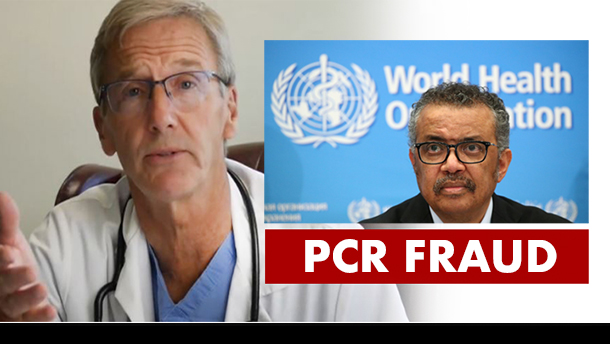
Increasingly, there are serious questions being asked about the factual basis for declaring a pandemic and the growing number of mitigation policies being implemented by governments and corporations. When is a COVID-19 “case” really a case? Moreover, do the case numbers and death numbers that have been touted over the last 12 months by governments in UK, EU, USA, and numerous governments around the world, accurately reflect actual COVID cases and COVID deaths?
In fact, the World Health Organization (WHO) itself has admitted that the entire basis for collating “case” numbers since the beginning of this ‘global pandemic’ is effectively null and void. In its directive published in late January, the organization stated that medical professionals should not be using PCR Testing with high Cycle Threshold (CT) levels due to the high likelihood of generating false positives in people, and also that the PCR Test should not be used as the sole metric for diagnosing and should be accompanied by a professional clinical diagnosis. In other words: the PCR Test cannot rightly be used as a medical diagnostic tool, and yet, it has been widely used as such for the last 12 months. This admission should have grave implications for every public health official, politician and media editor on the planet, but the silence is deafening – as most are simply ignoring this fact.
The following directive was issued on January 20, 2021 by the WHO:
Description of the problem: WHO requests users to follow the instructions for use (IFU) when interpreting results for specimens tested using PCR methodology.
Users of IVDs must read and follow the IFU carefully to determine if manual adjustment of the PCR positivity threshold is recommended by the manufacturer.
WHO guidance Diagnostic testing for SARS-CoV-2 states that careful interpretation of weak positive results is needed (1). The cycle threshold (Ct) needed to detect virus is inversely proportional to the patient’s viral load. Where test results do not correspond with the clinical presentation, a new specimen should be taken and retested using the same or different NAT technology.
WHO reminds IVD users that disease prevalence alters the predictive value of test results; as disease prevalence decreases, the risk of false positive increases (2). This means that the probability that a person who has a positive result (SARS-CoV-2 detected) is truly infected with SARS-CoV-2 decreases as prevalence decreases, irrespective of the claimed specificity.
Most PCR assays are indicated as an aid for diagnosis, therefore, health care providers must consider any result in combination with timing of sampling, specimen type, assay specifics, clinical observations, patient history, confirmed status of any contacts, and epidemiological information.
In addition, from the beginning of the ‘pandemic,’ arbitrary and broad guidelines for symptom diagnosis for COVID were being encouraged, and not surprisingly this corresponded with a complete disappearance of season influenza.
Former Minnesota state senator, Dr Scott Jensen MD, explains why this is absolutely crucial and how we’ve all been played over the last 12 months. Watch:
.
Video Credit: Coronavirus Plushie
SEE ALSO: UNDERLYING FAKE SCIENCE OF COVID CRISIS EXPLAINED
READ MORE PCR NEWS AT: 21st Century Wire PCR Files
PLEASE HELP SUPPORT OUR INDEPENDENT MEDIA PLATFORM HERE















